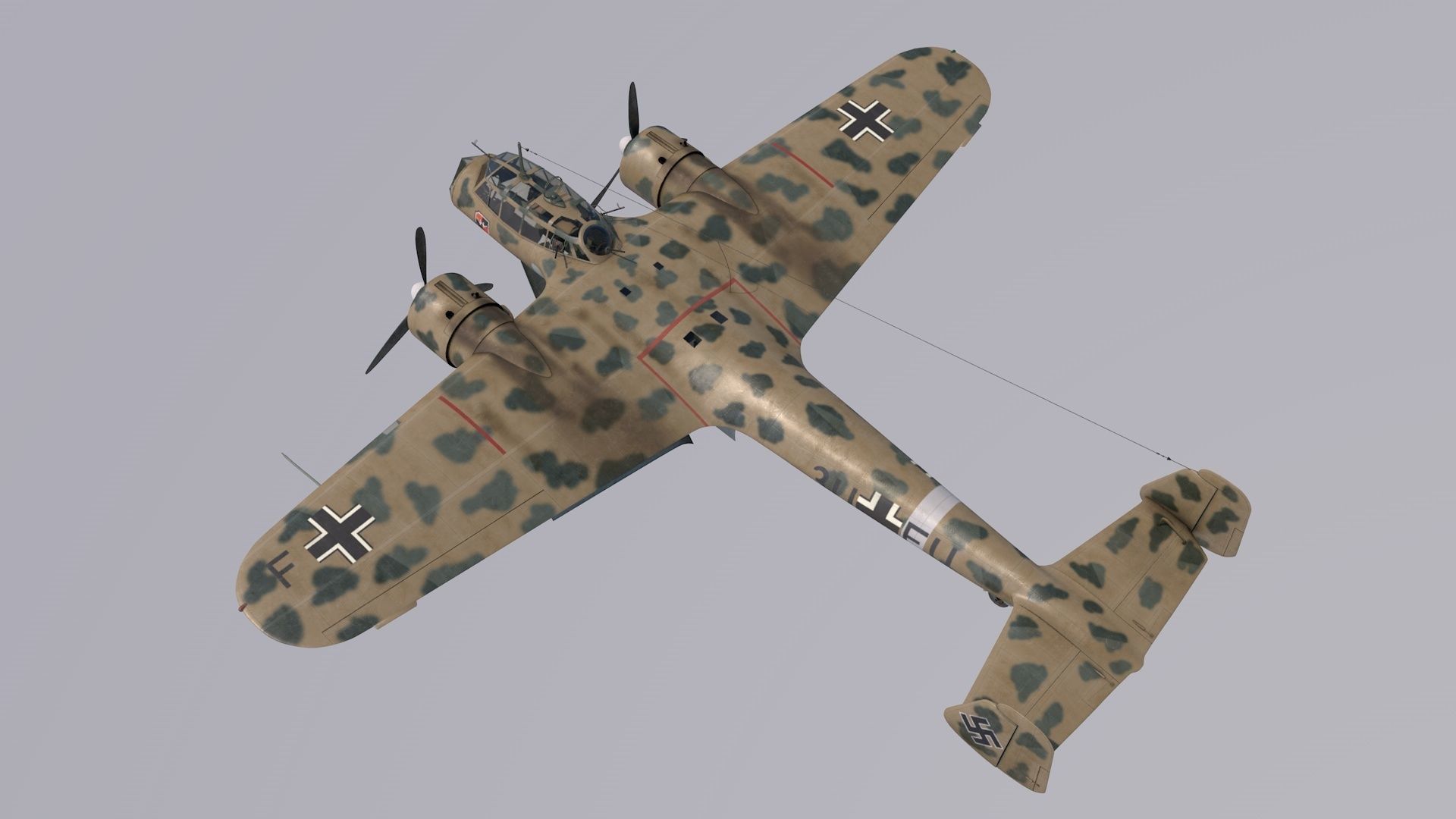
Dornier Do-17Z Trop 3D model
The Dornier Do 17, sometimes referred to as the Fliegender Bleistift (flying pencil), is a light bomber of Nazi Germany during World War II. It was produced by Claudius Dornier's company, Dornier Flugzeugwerke. The aircraft was designed as a Schnellbomber (fast bomber), a light bomber which, in theory, would be so fast that it could outrun defending fighter aircraft. The Dornier was designed with two engines mounted on a shoulder wing structure and possessed a twin tail fin configuration. The type was popular among its crews due to its handling, especially at low altitude, which made the Do 17 harder to hit than other German bombers. Designed in the early 1930s, it was one of the three main Luftwaffe bomber types used in the first three years of the war. The Do 17 made its combat debut in 1937 during the Spanish Civil War, operating in the Condor Legion in various roles. Along with the Heinkel He 111 it was the main bomber type of the German air arm in 1939–1940. The Dornier was used throughout the early war, and saw action in significant numbers in every major campaign theatre as a front line aircraft until the end of 1941, when its effectiveness and usage was curtailed as its bomb load and range were limited. High poly, high detailed 3D model with separate control surfaces, full interior, bomb load and landing gear.







